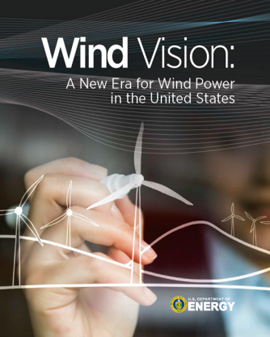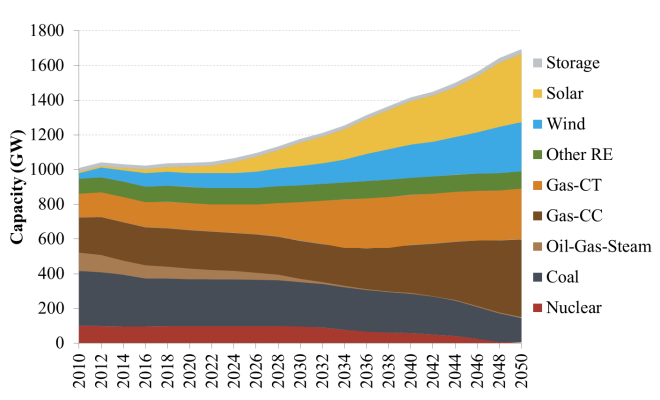The ATB and Standard Scenarios
The NREL Standard Scenarios product is a suite of 18 forward-looking power sector scenarios that NREL projects use in its long-term capacity expansion model (ReEDS) and its market penetration model (dGen).
The scenarios encompass earth system feedbacks, electricity demand growth, electricity generation, existing fleet retirements, fuel prices, the policy and regulatory environment, resource and system constraints, and technology costs. Together, they make possible the transparent and quantitative examination of how various inputs impact the development of the power sector. Moreover, they provide the context and data to not only understand changes in the U.S. power sector but also inform stakeholder decision making regarding its future direction.
The scenarios, which are updated each year along with the ATB, include technology cost and performance assumptions from the ATB.
The Need for Standard Scenarios
Scenario analyses are an integral part of any integrated technology analysis portfolio and are used to inform long-term research and development (R&D) strategies. Transparent, harmonized assumptions are required for scenario analysis to inform these strategies. Technology cost and performance data—both current and future—are critical drivers of future deployment of electricity generation technologies.
With the increasing reliance of so much energy analysis on its data and modeling tools, NREL developed its Standard Scenarios and ATB products to be the consistent underlying data and assumptions on which such analysis can be based. Together, NREL's Standard Scenarios and ATB are specifically intended to:
- Develop and document transparent, normalized technology cost and performance assumptions
- Enable consistency in assumptions across analysis projects (and modeling)
- Facilitate the tracking and sourcing of input assumptions
- Reduce the lead time in conducting scenario analysis.
Examples of Important Scenario Analysis by NREL
The seminal analyses reported in the following publications, which all required technology cost and performance assumptions, motivated NREL to create the ATB to lend consistency to the analyses.

- 20% Wind Energy by 2030: Increasing Wind Energy's Contribution to U.S. Electricity Supply (2008)
- Beyond Renewable Portfolio Standards: An Assessment of Regional Supply and Demand Conditions Affecting the Future of Renewable Energy in the West (2013)
- Evaluating a Proposed 20% National Renewable Portfolio Standard (2009)
- Geothermal Vision Study (forthcoming)
- Hydropower Vision: A New Chapter for America's Renewable Electricity Source (2016)
- Impacts of Renewable Energy Tax Credit Extensions (2016)
- Integrated Canada-US Power Sector Modeling with ReEDS (2013)
- ReEDS Modeling of the President's 2020 U.S. Renewable Electricity Generation Goal (2014)
- Renewable Electricity Futures Study: Exploration of High-Penetration Renewable Electricity Futures (2012)
- SunShot Vision Study (2012) and On the Path to SunShot (2016)
- Wind Vision: A New Era for Wind Power in the United States (2015).
2016 Standard Scenarios and the Outlook on the U.S. Electricity Sector

In 2016, when NREL released the ensemble of standard modeling scenarios for the future, it also for the first time published a report summarizing an analysis based on the scenario results. Specifically, the 2016 Standard Scenarios Report: A U.S. Electricity Sector Outlook explores four key areas of change in the U.S. power sector:
- Declining costs and increasing deployment of renewable energy
- Abundance of low-cost natural gas
- Rapid growth in rooftop photovoltaics
- Declining carbon dioxide emission intensity of electricity generation.
Scenario results from the Standard Scenarios are accessible via the Standard Scenarios Results Viewer.
